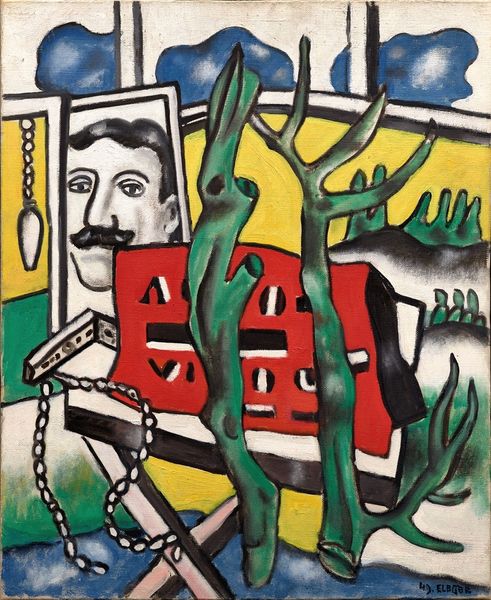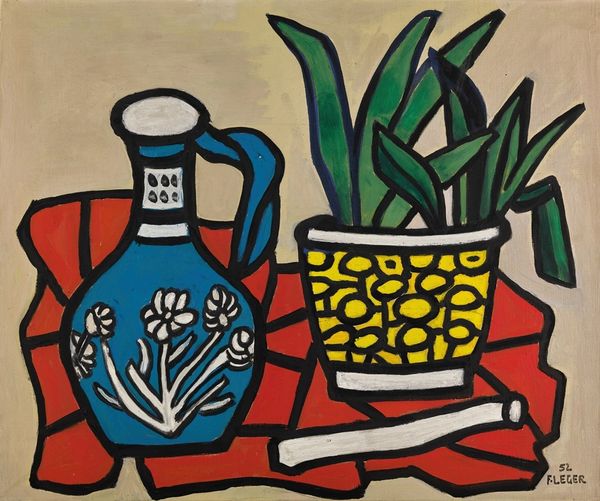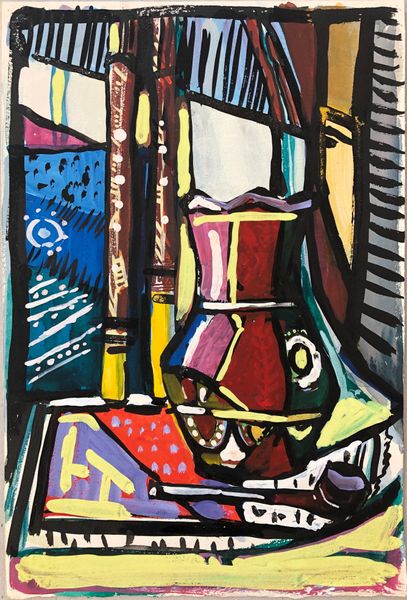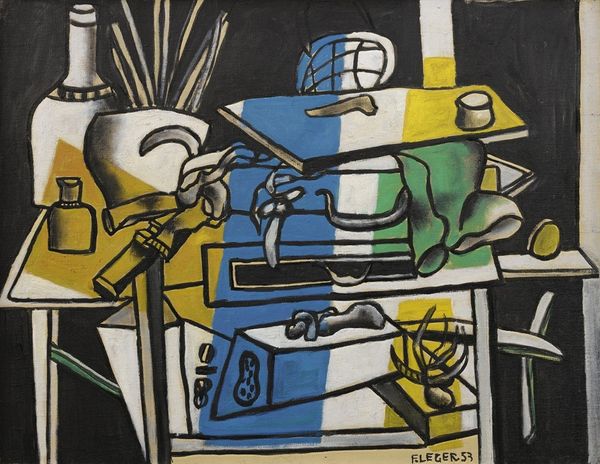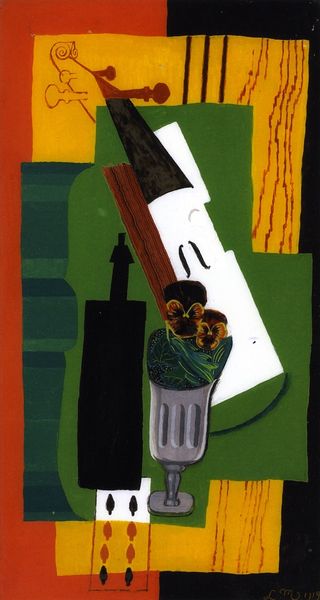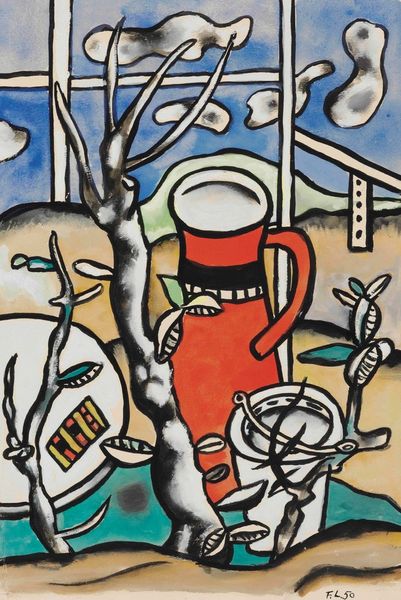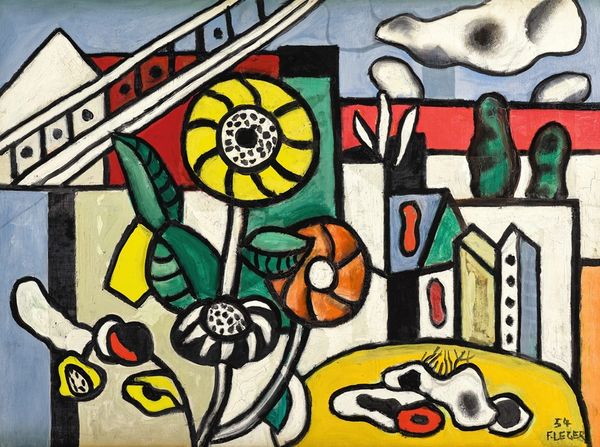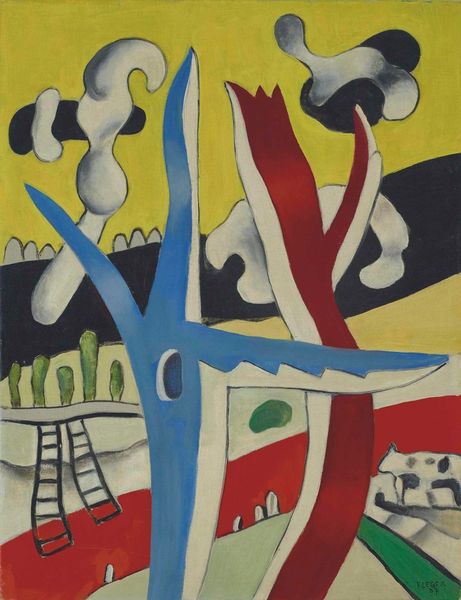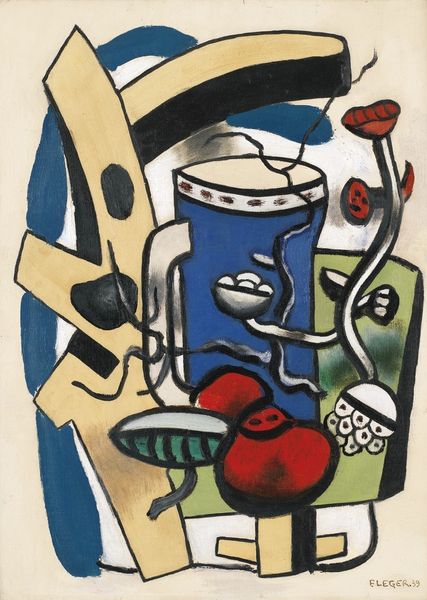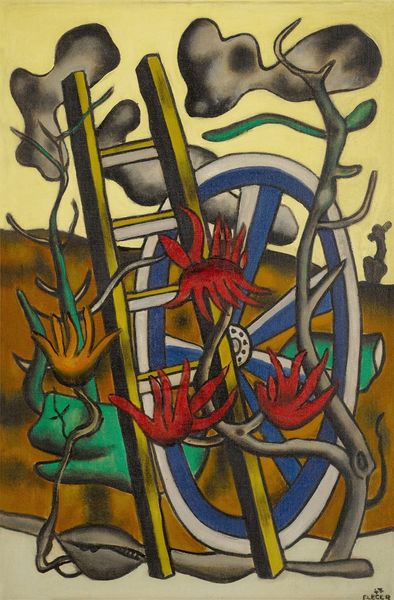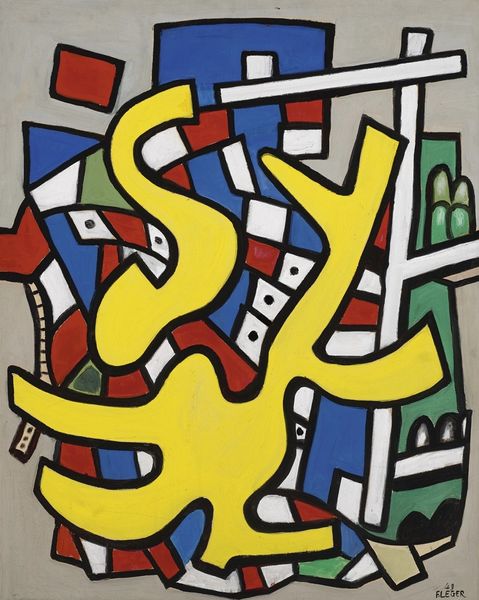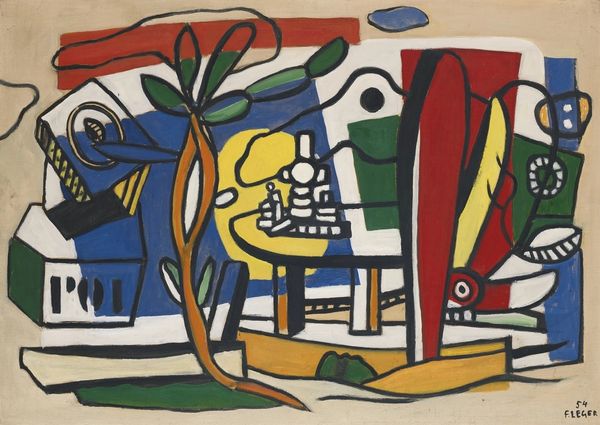
Copyright: Modern Artists: Artvee
Editor: This is Fernand Léger's "Landscape with Yellow Hat," painted in 1952. I find it fascinating how he uses these bold lines and colours to depict what seems to be a fairly standard landscape. The juxtaposition of recognizable objects rendered in such an abstract manner is compelling. What do you make of this piece? Curator: Well, when I look at this piece, I see a statement on the evolving role of art itself in a rapidly changing postwar society. Léger was deeply interested in how art could integrate with modern life and appeal to the masses, rejecting elitism. Note how the flattened perspective and simplified forms democratize the imagery. Editor: Democratize? Curator: Yes, exactly! By stripping away detail and focusing on the essential shapes and colors, Léger makes the painting more accessible, less tied to academic traditions that, let’s be frank, excluded much of the population. He's flattening the hierarchy, isn't he? Editor: I see your point. The ordinary objects—a hat, a pitcher, even a simple ladder—elevated and given importance. Is he saying that everyday life is worthy of artistic representation? Curator: Precisely! The composition rejects traditional notions of perspective, mirroring the socio-political disruption of the time. He offers up his unique vision in his unique visual language of modernism, a language to appeal to the masses! Do you see any political symbolism at play? Perhaps the red ladder suggesting rebuilding and construction, as well. Editor: The landscape is a space of cultural rebirth through imagery! I didn't initially see it that way, but viewing it through the lens of social and cultural change really enriches my understanding of Léger's intention. Curator: It's a powerful illustration of art's engagement with public life, don't you agree? It provides so much to consider regarding imagery as a function of culture.
Comments
No comments
Be the first to comment and join the conversation on the ultimate creative platform.
